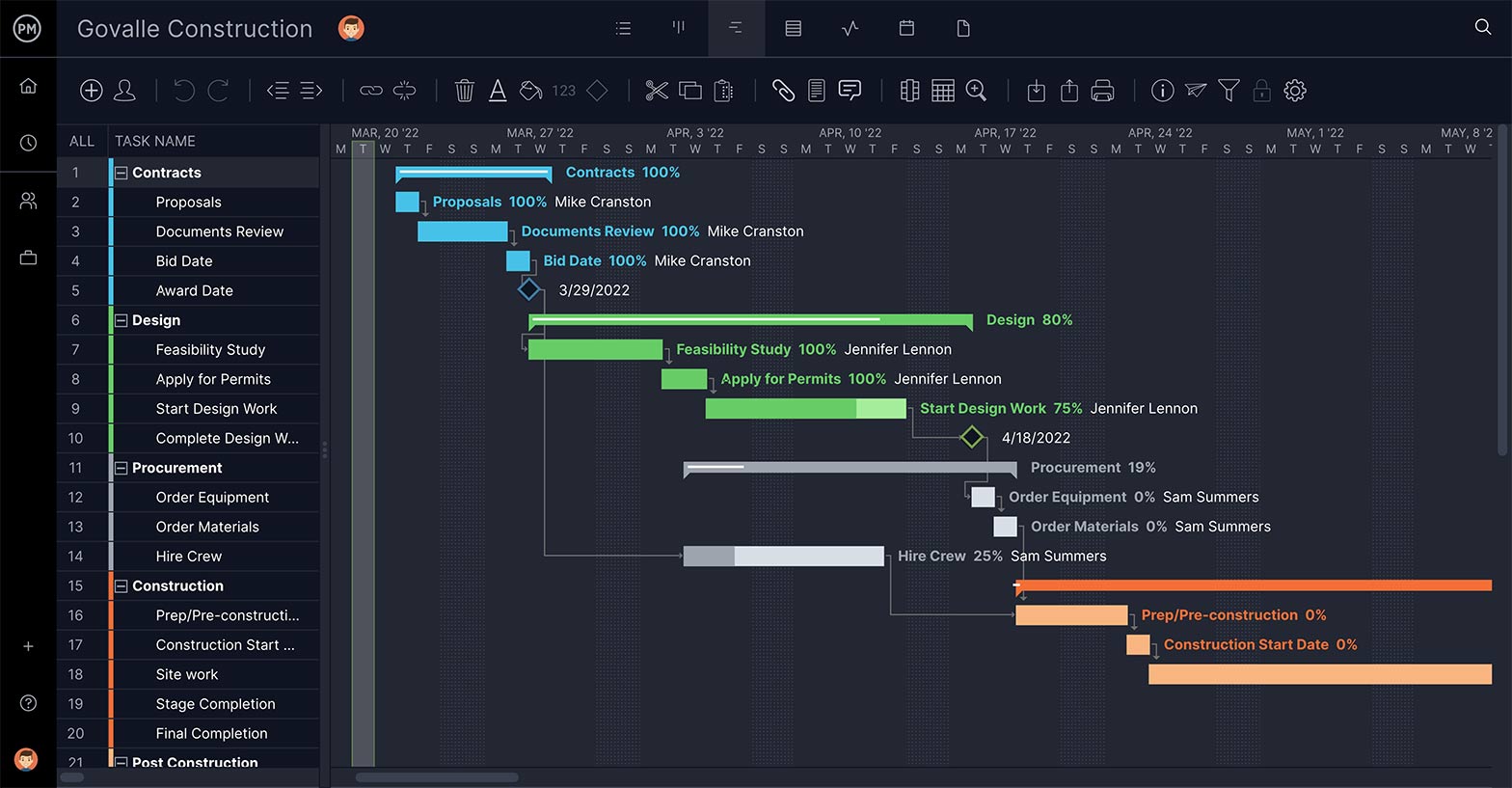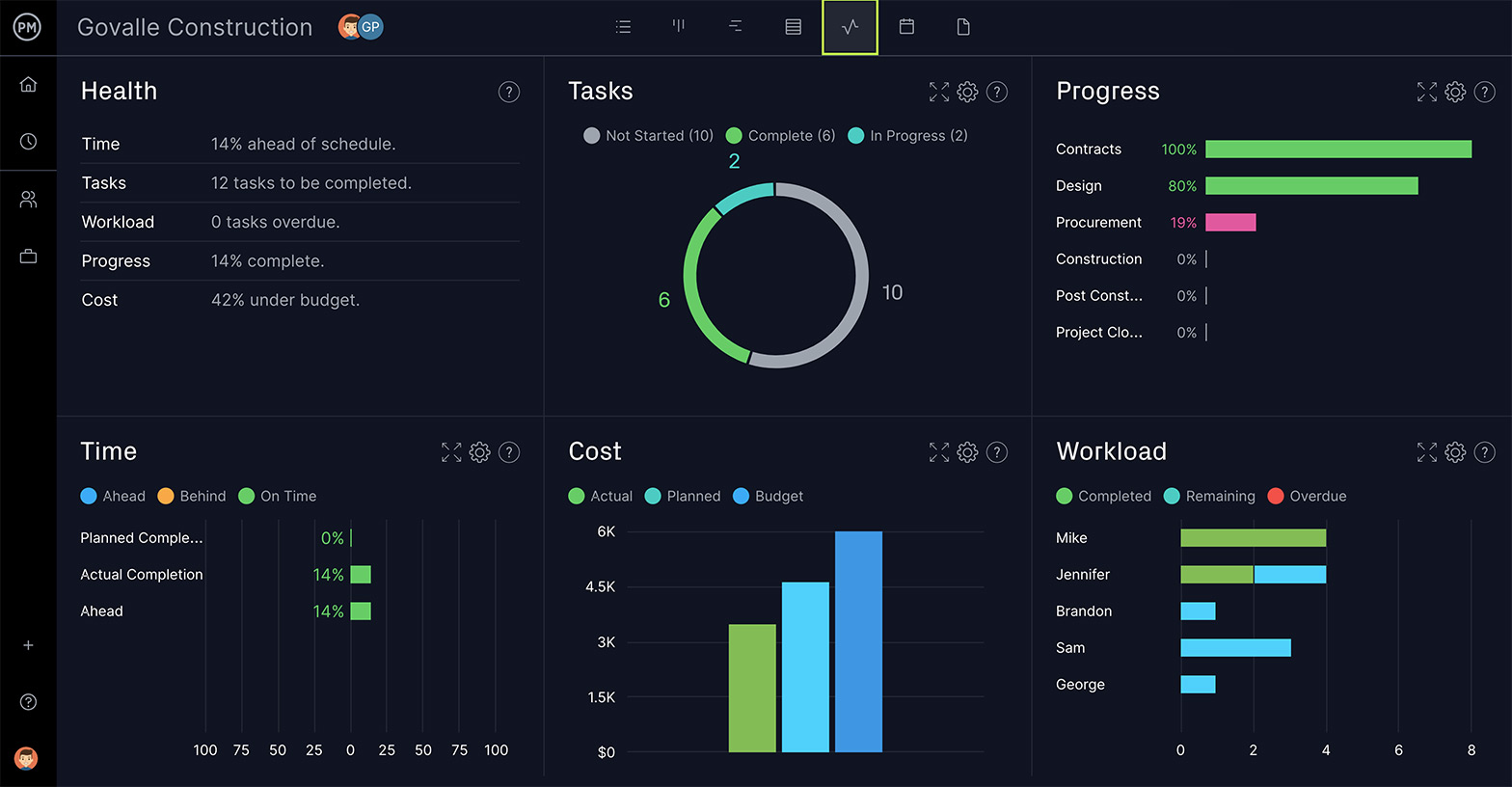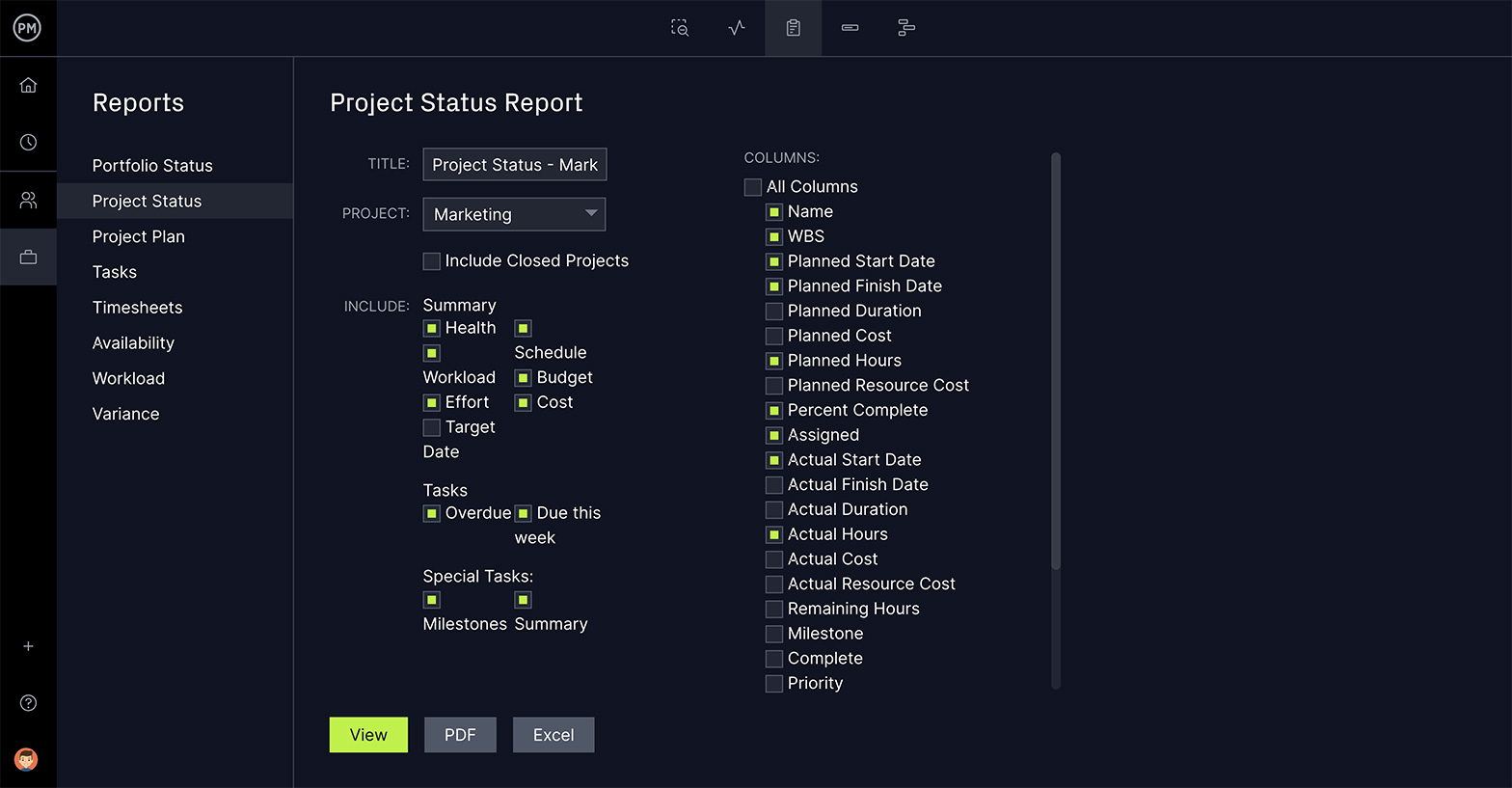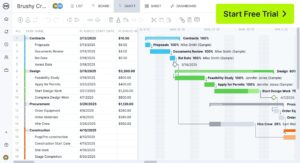Risk is always present in construction projects. By definition, construction risk feels unpredictable and damaging, but you can identify and manage them.
You may feel you can control risk in your organization and construction management team—but what happens when you’re working with independent contractors? Suddenly, the success of the construction project rests on the shoulders of those who are less accountable to you. However, you can minimize and mitigate contractor risks through a process known as contractor risk management.
Just as contract administration, contractor risk is important to understand. It requires screening and protecting yourself from issues that might arise in your relationship with the general contractor and their work on the project. That leads to contractor risk management, a risk register and a risk management plan, which can help you manage contractor risk on your projects.
What Is Contractor Risk in Construction Management?
A general contractor (GC) usually oversees a construction site and manages the work of subcontractors. A GC also manages the vendors and trades associated with the construction project. They serve as a central communication point between all involved parties.
An independent contractor, on the other hand, is also any non-salaried employee that is hired for a job on a temporary basis. Therefore, they are not given benefits and often are paid at a higher rate because of that.
While there are benefits to hiring a general contractor and subcontractors, they can also be a risky venture. Any risk management process should include sharing the risk between the contractor, project manager and construction project management office.
That means the general contractor must have his own risk mitigation process that works jointly with the construction project manager. They must conduct risk identification and analysis throughout the project and have a risk management plan in place.
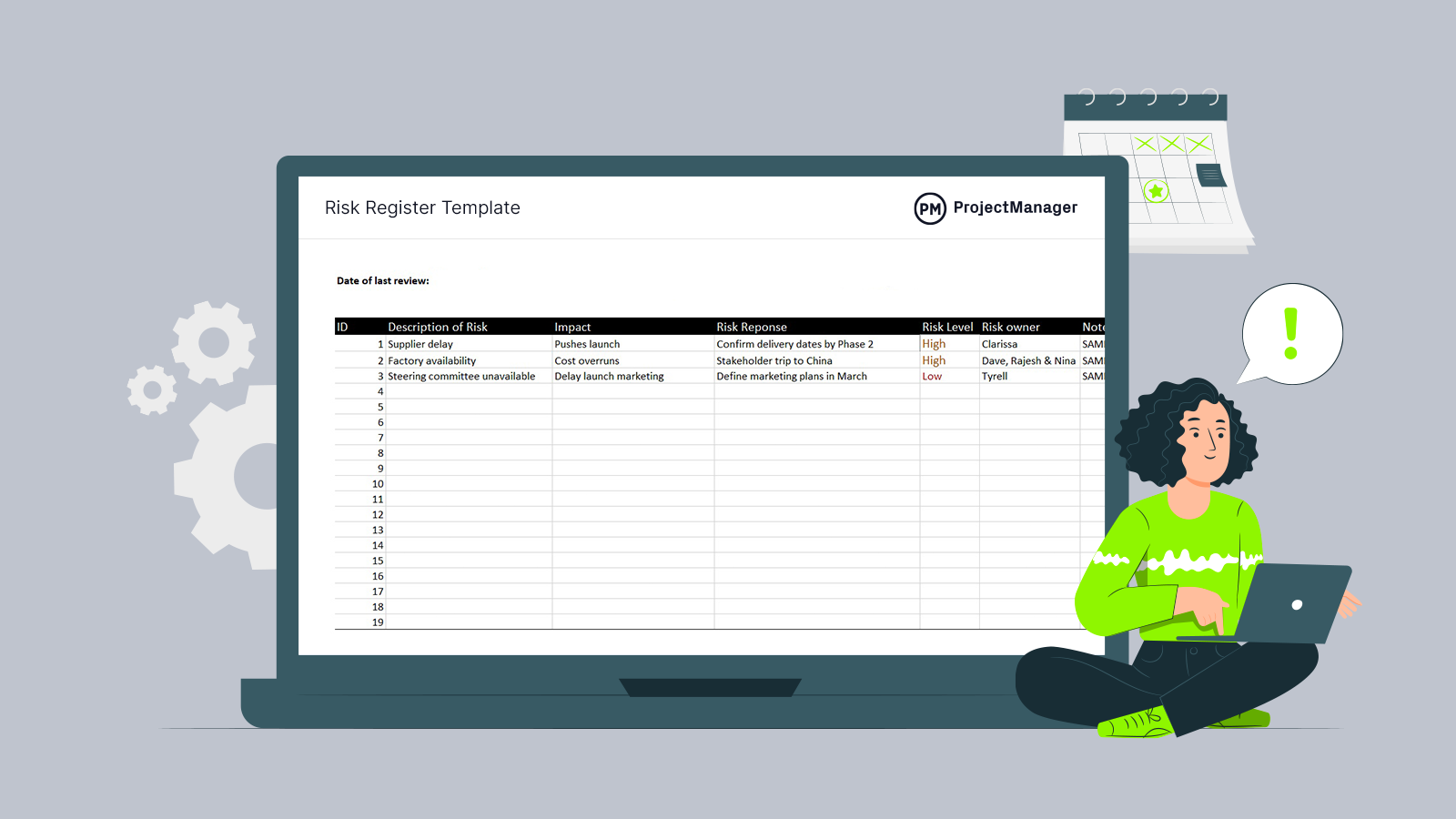
Get your free
Risk Tracking Template
Use this free Risk Tracking Template for Excel to manage your projects better.
What Is Contractor Risk Management
Contractor risk management is the process of identifying, assessing and controlling the risks associated with an organization’s contractors. It is used to manage the work of general contractors and subcontractors.
Risk is part of any construction project, but managing that risk becomes more difficult when that risk is shouldered by independent contractors, not under the full authority of the organization.
Contractor risk management defines the parameters of the relationship and explains who is responsible for what when it comes to setting up a risk management process. That includes identifying and mitigating risks that may become active issues in the construction project.
In order to manage risk, project managers and contractors have to stay connected to coordinate their work. ProjectManager is online software that connects everyone on the project team in real time. Risks can be created as tasks that are assigned to relevant team members. Add any important documents and determine the ideal response from a dropdown menu. You can track your construction risk from the project menu in real time to keep the lines of communication open and clear. Get started with ProjectManager today for free.
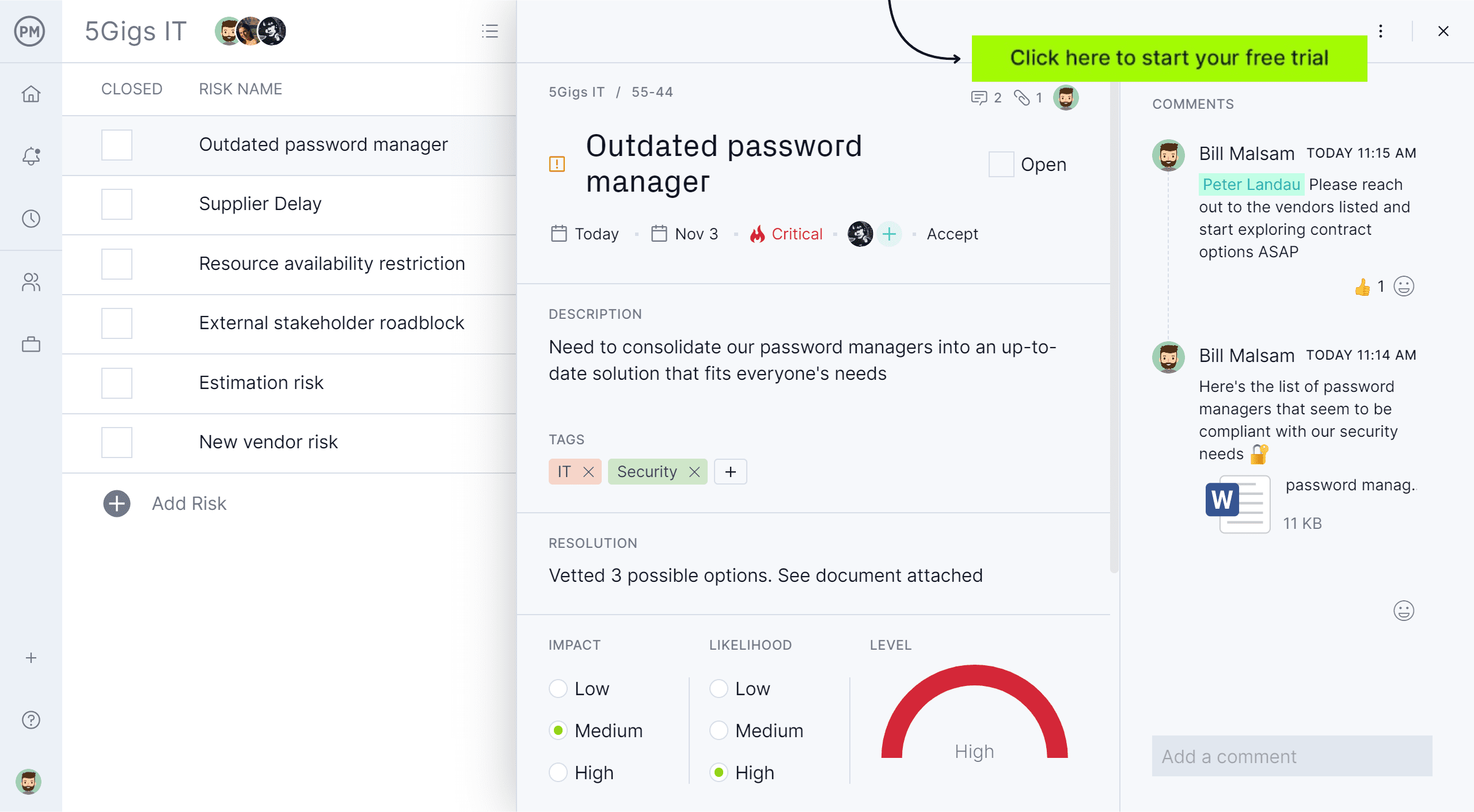
Contractor Risk Management Process
The contractor risk management process is a systematic approach used to identify, evaluate and control potential risks associated with hiring and working with third-party contractors. This process ensures that contractors meet safety, compliance, financial and performance standards before and during project execution. Effective contractor risk management protects an organization’s assets, timeline, budget and reputation.
Contractor Prequalification
Contractor prequalification is the initial screening phase where potential contractors are evaluated for their suitability to perform work safely, legally and effectively. This typically involves reviewing the contractor’s financial stability, safety records, licenses, certifications, past performance and insurance coverage. Prequalification filters out unqualified contractors before any work begins, reducing risk exposure.
Contractor Risk Identification
This step involves identifying all potential risks associated with hiring and working with a contractor. These risks can be financial (e.g., budget overruns), operational (e.g., delays), legal (e.g., non-compliance), or safety-related (e.g., workplace accidents). Early identification allows the project team to anticipate issues that could impact scope, schedule or reputation.
Contractor Risk Assessment
In the risk assessment phase, each identified risk is analyzed based on its likelihood of occurrence and the potential severity of its impact. This prioritization helps determine which risks require immediate attention and resource allocation. Risk assessment may use qualitative or quantitative tools, such as risk matrices, to guide decision-making.
Contractor Risk Mitigation
Once risks are assessed, mitigation strategies are developed to reduce or eliminate them. This might include requiring additional safety training, revising contract terms, increasing oversight or mandating insurance coverage. The goal is to proactively address vulnerabilities before they escalate into costly issues or disruptions.
Contractor Risk Monitoring
Risk monitoring involves the continuous oversight of contractor performance and risk exposure throughout the project lifecycle. It ensures that mitigation strategies are working and that new risks are promptly identified and addressed. Monitoring may include site inspections, performance reviews, compliance audits and real-time tracking tools.
Contractor Risk Communication
Risk communication ensures that all stakeholders—project managers, contractors, safety officers and executives—are kept informed of risk status, decisions and mitigation actions. Clear, timely communication fosters collaboration, supports accountability and enables rapid response when risks change or new challenges emerge.
Types of Contractor Risks
Contractor risks refer to the various threats that arise from engaging third-party vendors or service providers to perform work on behalf of an organization. These risks can impact budgets, timelines, legal compliance and safety. Understanding the types of contractor risks helps organizations implement proactive management strategies and ensures that contractor involvement aligns with project goals and regulatory expectations.
Financial Contractor Risk
Financial contractor risk involves the potential for monetary loss due to a contractor’s inability to manage funds, maintain solvency or complete work within the agreed budget. This risk includes underbidding, cash flow issues or bankruptcy. Such problems can lead to stalled projects, additional costs or the need to find replacement contractors—disrupting timelines and increasing financial exposure for the hiring organization.
Performance Contractor Risk
Performance contractor risk refers to the threat that a contractor may not meet the expected quality, schedule or deliverables outlined in the contract. Causes can include poor workmanship, lack of resources or inadequate project management. These failures can result in delays, rework, dissatisfied stakeholders and potentially damage the reputation of the hiring organization if deliverables fall short of expectations.
Compliance Contractor Risk
Compliance contractor risk arises when contractors fail to adhere to legal, regulatory, safety or environmental standards. Non-compliance can result in fines, legal penalties or the shutdown of a project. Examples include inadequate licensing, violating labor laws or poor safety practices. Managing this risk is essential to maintain project integrity, protect workers and ensure adherence to industry regulations.
Operational Contractor Risk
Operational contractor risk refers to disruptions in day-to-day project activities caused by contractor-related issues such as equipment failure, staff shortages or poor coordination. These operational inefficiencies can hinder productivity and affect timelines and costs. Effective oversight, clear communication and integrated scheduling are key to minimizing this risk and keeping the project on track.
Contractual Contractor Risk
Contractual contractor risk stems from ambiguities or shortcomings in the contract itself. This includes unclear scope definitions, lack of performance metrics, poorly defined change management clauses or inadequate dispute resolution terms. These gaps can lead to disagreements, delays or legal battles. Thorough contract drafting and review processes are essential to reduce this risk and protect project interests.
Risk Tracking Template
This free risk tracking template for Excel allows you to list project risks, their priority level, assign them to your team members and track risk mitigation strategies.
More Free Contractor Risk Management Templates
A risk tracking template is only one of over 100 free project management templates for Excel and Word that cover all aspects of managing projects across multiple industries. Below are a few of those templates that relate to risk management.
Risk Register Template
Download this free risk register template for Excel to systematically record and track potential risks associated with a project, process or organization. It serves as a central tool in risk management, helping teams identify, assess, prioritize and monitor risks over time. The template includes fields for each risk’s description, category, likelihood, impact, risk owner, mitigation strategy and current status.
Risk Management Plan Template
Use this free risk management plan template for Word to outline how risk will be identified, assessed, monitored and controlled throughout a project or organizational process. It provides a consistent format for documenting the strategies, roles, responsibilities, tools and methodologies used to manage potential threats or opportunities that could impact project goals.
Risk Matrix Template
This free risk matrix template for Excel is used to evaluate and prioritize risks based on their likelihood of occurrence and potential impact. Formatted as a grid, the matrix helps teams quickly assess the severity of risks and determine the appropriate level of response or mitigation.
Why Is Contractor Risk Management Important?
A contractor’s risk management process is vital to the success of a project. For one, it provides safety guidelines for workers, which is important for those who work in the dangerous field of construction.
Using a contractor risk management system also streamlines your operations. You can apply the work you do on your present project as you plan future projects. It also gives your teams the tools they need to make the right decisions to avoid risk.
Having a contractor risk management plan in place will boost the overall confidence of the project team. It’s like working with a safety net and helping them to balance risk factors. That saves time and resources, which can lead to an increase in profits.
5 Simple Steps for Better Contractor Relationships
There are always ways to improve your contractor risk management. Once you start setting up a risk management process, you’ll find that, when issues arise, you’re ready for them. But regardless of how prepared you are, there is always room for improvement when managing contractor risk.
- Construction Contractors Are Not Employees: You have set up a temporary partnership with your contractors. They are not employees, but you do want contractors to feel part of the project and that their participation is appreciated.
- Stay Consistent: One of the most important is to keep things consistent. Having different management processes with different contractors, consultants and freelancers is bad business. Payroll, onboarding and offboarding should be consistent across external and internal workers.
- Set Expectations: Contractors need to know what they are supposed to do. Not setting expectations is poor communication, and leads to contractors going off-track. Managers should have regular meetings with contractors and get status reports from them to make sure things are moving forward as planned.
- Create Chain of Command: You want your contractor to report on their status regularly. But you don’t want that process to be overly complex or confusing. This will frustrate your contractor, which leads to poor productivity. Be clear about who the contractor should report to and when they need to report to them.
- Keep the Lines of Communication Open: Communication ties all these tips together. Lack of communication is a killer on any project and more so when you’re dealing with contractors. Make sure your communication plan is clear with contractors.
Contractor Risk Management Best Practices
The contractor life cycle goes: prequalification, pre-job task and risk assessment, contractor training and orientation, monitoring of job and post-job evaluation. Following this cycle is a great framework for your contractor risk management.
Third-party companies can do prequalification, which looks at contractors’ safety statistics. They will include metrics to grade the contractor on. A passing grade provides security that you’re working with a professional.
Of course, the job task and risk assessment phase is the meat of any contractor’s risk management. It’s good to have an internal risk matrix when starting this phase. Insurance liability, type of work and equipment used and so forth will also factor in here.
Most organizations use on-site skill and safety orientation and training. This phase can also include special permits. In order to work, the contractors must complete this training, which adds to the overall safety and reduces risk on the job site.
Contractor risk management doesn’t end once the work begins. There must be inspections, which might include a daily checklist, monthly assessment or weekly walkthrough. You should also evaluate contractors after the job for organizations to learn what went right and what went wrong. This way they can improve their contractor risk management going forward.
Things to Avoid in Contractor Risk Management
Ironically, one of the worst things you can do when managing contractor risk is hiring too many contractors. Outsourcing can get you into trouble. Whose opinion on the work is the one you should listen to, for one?
The issue is you might favor one contractor over another. This is not going to sit well with the others. It also shows a lack of leadership on your part. Managers are decision-makers. Make a decision on how to manage the project and then carry forth with it.
When you have a path forward and have clearly communicated it to the contractors you’ve selected, everything will run more smoothly. Another thing to remember is the importance of reporting. That’s how you stay in touch with the work your contractors are doing.
You need to monitor and track their progress and performance to make sure they’re meeting the benchmarks you’ve set up for the project. Tracking more than one contractor can be more difficult, but that issue is resolved with the help of project management software.
How ProjectManager Helps Manage Contractor Risk
ProjectManager is cloud-based software that allows you to monitor and track contractor risk in real time. Our tool not only captures issues as they arise but allows managers to plan how to resolve those issues before they become problems that sideline the entire project.
Create Risk Management Plans on Gantt Charts
In order to mitigate contractor risk, you need to identify risk and have a plan in place to respond quickly and effectively. ProjectManager’s online Gantt charts can create risk mitigation plans that you can share with contractors. You can determine resources and budget, too. If the issue arises, you can set the plan in motion.
Track Progress on Dashboards
The Gantt will show the percentage complete, but for a high-level view of the progress and performance of your contractors use ProjectManager’s real-time dashboard. Unlike other tools, you don’t have to spend time configuring the dashboard, it’s all set up and ready to go. The live dashboard automatically captures status updates and calculates the data, which is then displayed on easy-to-read charts and graphs.
Generate Reports With a Single Click
Managers need to report to the leadership team and stakeholders. They also need more than a high-level view of the project they’re managing. That’s where one-click reports come in handy. Get detailed reports on time, cost and much more to better monitor the project. You can filter every report to show just the information you or your stakeholders want to see. Then, you can share the reports in a variety of formats to help keep everyone in the loop.
There’s so much our software does beyond planning and tracking. Email and in-app notifications keep you updated on what’s happening in the project. The collaborative platform allows contractors and the rest of the project team to stay connected. There are even streamlined timesheets, which are secure and provide further data on how long it’s taking contractors to complete their tasks.
ProjectManager is award-winning software that plans, monitors and reports on contractor risk. Use real-time data for better contractor risk management and keep your project issue-free and on track. Try ProjectManager today for free!
The post A Quick Guide to Contractor Risk & Contractor Risk Management appeared first on ProjectManager.


